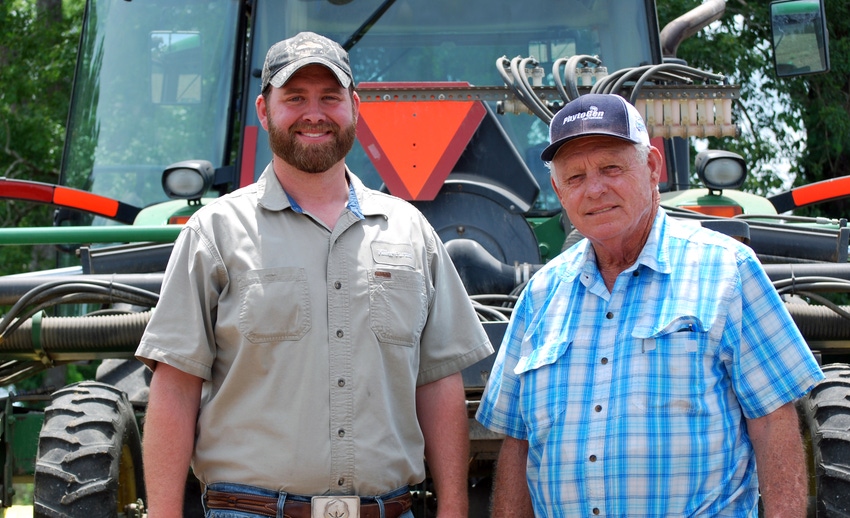
Jimmy Miller’s farm is 100 percent nonirrigated, and his average field size is about 20 acres. In 2017, his peanuts averaged 6,824 pounds per acre on 88 acres. The farm has a nine-year average of 4,724 pounds per acre.
His unique way of growing high-yielding peanuts on what can be topographically challenging dryland fields has earned him the 2018 Farm Press Peanut Efficiency Winner for the Lower Southeast States. He farms in partnership with his nephew Lance near Snead, Ala.
In 2009, Miller started growing the Georgia-06G runner variety. But in 2011, he started exclusively growing high-oleic varieties; last year, varieties included Georgia-09B (70 acres) and Tufrunner 297 (18 acres).
His typical production program runs something like this: He spreads 2.5 tons of chicken litter per acre on cotton land a year before it goes into peanuts, then disks fields. He likes to get planted in mid-May, and plants on 38-inch rows. Last year, he started planting in a twin-row pattern, with 7 inches between the twins, using about 120 pounds of seed per acre of Tufrunner and 100 pounds per acre of GA-09B, shooting for about 3 seed per row-foot. He uses First-Up inoculant, and one packet covers about 10 acres.
The Inputs
His fertility program includes PercPlus in-furrow, and he applies ammonia sulfate on peanut ground because he likes to have about 15 pounds to acre of sulfur. He also applies a mix of 12.5-0-66-12.5. For boron, he applies 1 pint per acre of Full Bor four times during the season, usually along with a fungicide application. For maintenance, he will add 60 units of potash per acre.
For insects, he puts 10 oz. per acre of imidacloprid in-furrow, and behind the planter he broadcasts 2 oz. per acre of Mustang Maxx, which includes a pyrethroid. His fungicide program includes Abound in-furrow at 6 oz. per acre. He’ll apply a mix of Bravo at 1 pt. per acre and Onset at 8 oz. per acre twice in the season. He makes three applications of a mix of Bravo at 1 pt. and Elatus at 8 oz.
For pre-emergence weed control, he uses Prowl H2O at 1 qt. per acre, Valor SX at 2 oz., and Strongarm at .45 oz. per acre. For postemergence, he applies Cadre at 3 oz. and 2,4-DB twice at 1 pt. per acre.
The Weather
Weather is the pivotal variable for most farmers, but it’s even more so for dryland growers like Miller. His worst year in peanuts was 2016, when a record drought hit Alabama. From May through September, it rained only 10 in. on his farm, contrasted to the 33 in. the farm received for the same months in 2017. He left about 500 pounds per acre in the fields in due to hard ground during digging, but still averaged 4,600 pounds per acre in 2016.
In 2017, Miller switched to twin-row peanut production. The practice lets the plants cover the ground quicker and better, Miller says, which is good in a dryland situation, and the practice has added about 400 pounds per acre in yields.
To economically switch over to twin-row, he used a four-row 1700 John Deere planter he already had, bought and installed conversion stand-off bars and added four extra units, and had vDrives installed to help speed planting while keeping seed tubes from getting stopped up.
About the Author(s)
You May Also Like






